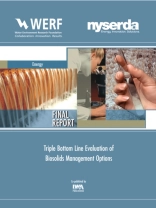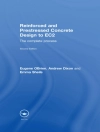The overall goal of this energy project was to aid water resource recovery facilities (WRRF) in moving toward "net-zero" energy use through near-at-hand practices and technologies in the areas of energy conservation, demand reduction, and enhanced production. Many WRRFs looking to become Utilities of the Future are using Triple Bottom Line (TBL) assessments to inform decisions about opportunities for long term sustainability, and to evaluate common wastewater solids management technologies and processes amenable for energy recovery based on social and environmental impacts, as well as financial metrics. Funded through a collaborative effort between the New York State Energy Research and Development Authority (NYSERDA) and the Water Environment Research Foundation (WERF), researchers used a TBL approach to evaluate common wastewater solids management technologies and processes relative to their potential for long term sustainability, including energy neutrality. The TBL assessment began at the point where solids are removed from wastewater (in primary and secondary clarifiers) and continued through the end use, or disposal, of the final product(s). To the extent practicable, the assessment included anaerobic digester side-stream treatment processes.
Steve Tarallo
Triple Bottom Line Evaluation of Biosolids Management Options [PDF ebook]
Triple Bottom Line Evaluation of Biosolids Management Options [PDF ebook]
Mua cuốn sách điện tử này và nhận thêm 1 cuốn MIỄN PHÍ!
Ngôn ngữ Anh ● định dạng PDF ● ISBN 9781780407173 ● Nhà xuất bản IWA Publishing ● Được phát hành 2015 ● Có thể tải xuống 3 lần ● Tiền tệ EUR ● TÔI 4425591 ● Sao chép bảo vệ Adobe DRM
Yêu cầu trình đọc ebook có khả năng DRM












